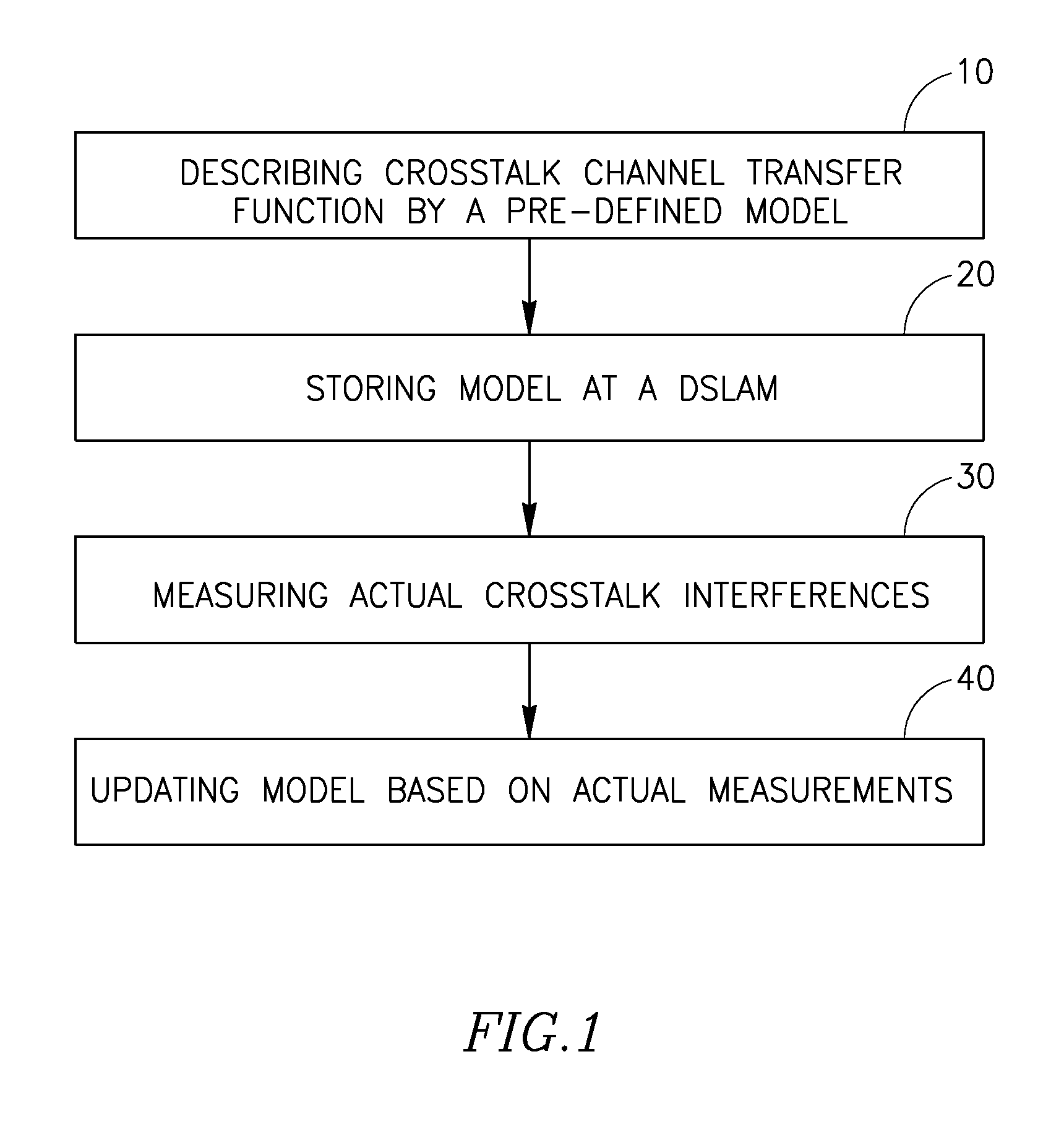Method for estimating crosstalk interferences in a communication network
a communication network and crosstalk technology, applied in the field of telecommunications, can solve the problems of limiting the bandwidth or channel capacity of any typical access network, crosstalk noise, and the techniques discussed in the prior art suffer from a further disadvantage, so as to achieve significant noise power level change, avoid stressing the operating margin, and measure the effect of noise level
- Summary
- Abstract
- Description
- Claims
- Application Information
AI Technical Summary
Benefits of technology
Problems solved by technology
Method used
Image
Examples
Embodiment Construction
[0033]Reference will now be made in detail to an implementation consistent with some embodiments of the present invention as illustrated in the accompanying drawings.
[0034]Let us consider now a non-limiting example of a method carried out in accordance with an embodiment of the present invention as depicted in FIG. 1. By this example, the crosstalk channel transfer function is described by a pre-defined function (step 10 of FIG. 1), which, in the present case, we shall assume to be:
HFEXT=A+B*log 10(f)+C*sqrt(f) (1)
[0035]wherein:
[0036]HFEXT is the far end crosstalk transfer function of the channel;
[0037]f is the frequency at which communications are exchanged along the channel; and
[0038]A, B and C are parameters relating to the channel of interest.
[0039]This formula (model) is stored (step 20) at the DSLAM (possibly but not necessarily, with other general models). Next, a direct transfer function is measured during normal course of DSL modem activation (step 30) and the formula / mod...
PUM
 Login to View More
Login to View More Abstract
Description
Claims
Application Information
 Login to View More
Login to View More - R&D
- Intellectual Property
- Life Sciences
- Materials
- Tech Scout
- Unparalleled Data Quality
- Higher Quality Content
- 60% Fewer Hallucinations
Browse by: Latest US Patents, China's latest patents, Technical Efficacy Thesaurus, Application Domain, Technology Topic, Popular Technical Reports.
© 2025 PatSnap. All rights reserved.Legal|Privacy policy|Modern Slavery Act Transparency Statement|Sitemap|About US| Contact US: help@patsnap.com



